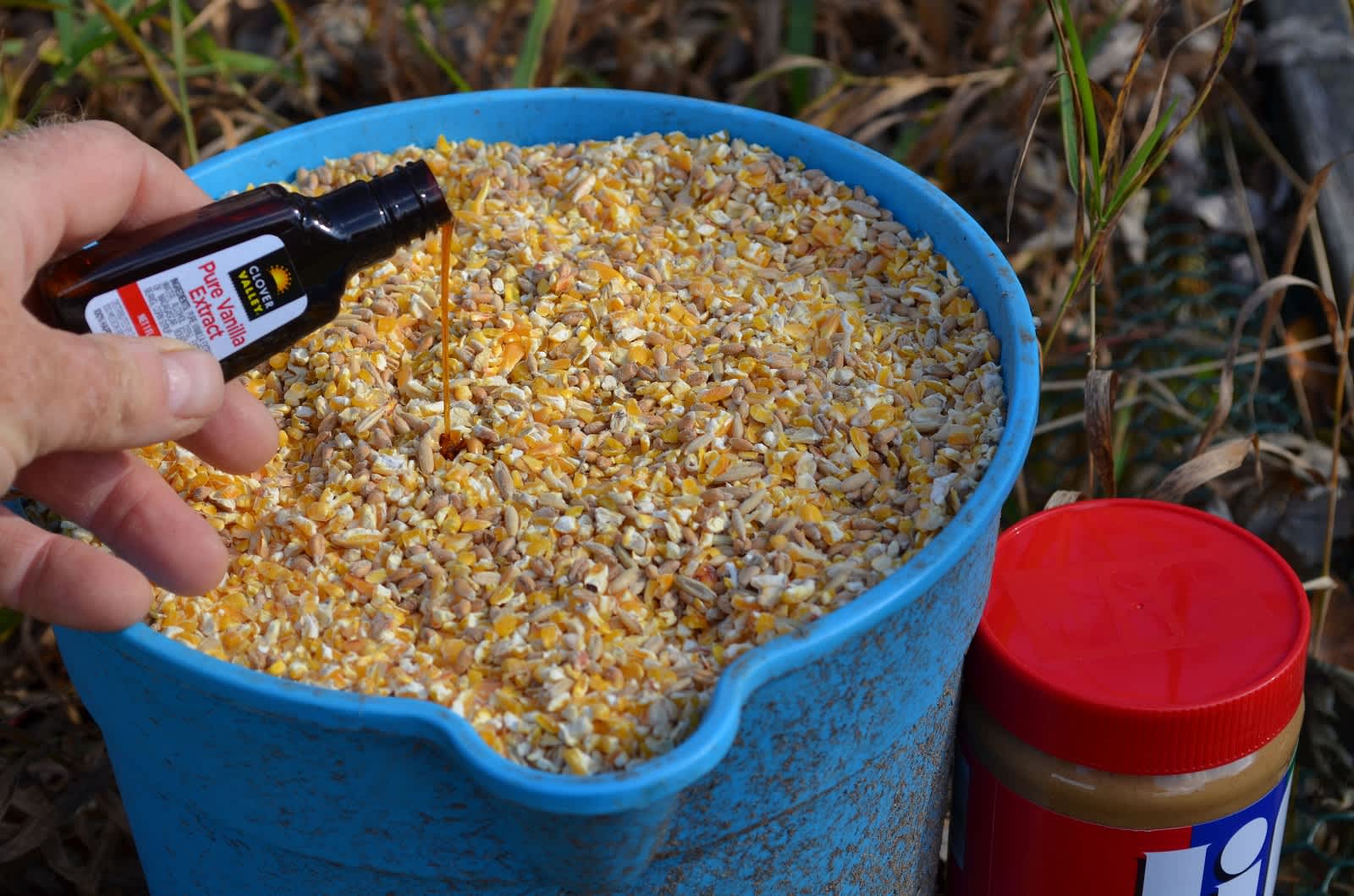Michigan Firearms Deer Season: Better Bait Than Never
Dave Mull 11.12.13

I admire those guys who hunt Michigan deer all year ’round, and I’m not talking about poachers. Lots of perfectly ethical Michigan hunters don’t limit their pursuit of whitetails to the open season. They plant food plots, often in open areas in the woods, providing tasty and nutritious plants for deer to snack on through the spring, summer, and fall.
These folks often hunt with trail cameras, recording the deer that visit their food plots day or night. Most members of this group set up several treestands by the end of July, pruning trees to ensure good shooting lanes well before the season starts so as not to disturb the deer after they’ve established fairly predictable daily movements. With several stands, the hunter can select the right one depending on wind and the latest trail-cam recording.
Then there are the people like me. I love to go deer hunting, but I lack the passion to do it beyond the actual season. Oh, I sight in the old Mossberg 500 slug gun each fall and practice shooting bolts with my crossbow before heading afield. Then I sit in the same ramshackle shed at my brother-in-law’s farm, equipped with binoculars and a rangefinder and really enjoy myself, mostly watching bluebirds and deer way out of range. But after four years without actually shooting at a deer (one doe with a fawn presented itself the first year, but I passed) I’ve decided to up my odds for deer contact with a pile of bait.
Except in Michigan, I can’t pile it anymore. In fact, all deer hunters must follow a pretty specific set of rules if they put out corn, apples, beets, or anything else where it might bring a deer within range.
Baiting is a long-time Michigan whitetail tradition. One still sees hand-written signs outside of rural gas stations and grocery stores advertising “deer carrots,” and “deer beets” as well as “deer apples.” You used to see a lot more of them. The hunter could buy large bags of veggies and fruit cheaply; the produce was almost always a little rotten and maybe had a few worms. Hunters would haul this food, along with buckets of shelled corn and other things deer like to eat, to their hunting sites starting in late summer. When hunting seasons started, the deer came to their regular eatery, which would by then be covered by a hunting blind or tree stand. It was a pretty effective part of a plan to put venison in the freezer.
That all changed in 2008, when baiting was banned across the Lower Peninsula due to concerns of chronic wasting disease (CWD) and bovine tuberculosis. The first case of CWD was found in a deer farm near Grand Rapids; tuberculosis had been discovered in a few counties in the northeast part of the state. The ban also affected backyard nature watchers who no longer were allowed to feed deer.
The no-bait rule was not popular (to put it extremely mildly) among many deer hunters. So Michigan’s Natural Resources Commission lifted the ban for most of the Lower Peninsula before the 2011 season, although it’s still illegal to bait in counties where tuberculosis was a concern.
The good old days of large bait piles are gone. Strict guidelines dictate how much bait hunters can put out at each hunting site and how they must spread it around. Hunters may put just two gallons of deer food out and it must be spread out in a 10-foot-by-10-foot area. You can watch a video produced by the Michigan Department of Natural Resources (DNR) on baiting rules below.
The DNR’s Brent Rudolph shows just what your bait presentation can look like and explains some nuances of the law. For instance, each hunting site—not each hunter—is allowed to have only one 10-by-10 bait area. And only two gallons of bait can be in that area at any one time—you can only replace what the deer or other critters eat. You also are limited to setting bait out during the deer seasons, from October 1 to the end of the year.
That last rule is fine by me, since I only recently decided this is my season to go into harvest mode instead of just sitting out there and watching birds. After doing massive research concerning bait for deer (well, one good Google search) I’ve gleaned some insights from all over the country on what makes the best whitetail bait. I came up with my own sure-fire deer bait recipe combining peanut butter, cracked corn from our chicken feed bin, some sweet feed we feed the goats, and vanilla extract. There’s no doubt in my mind that this aromatic combo will bring deer in, and if I’m wrong, I’ll probably still see a whole lot of bluebirds.
For more information on Michigan hunting go to michigan.org. Click here to purchase a Michigan hunting license online.

